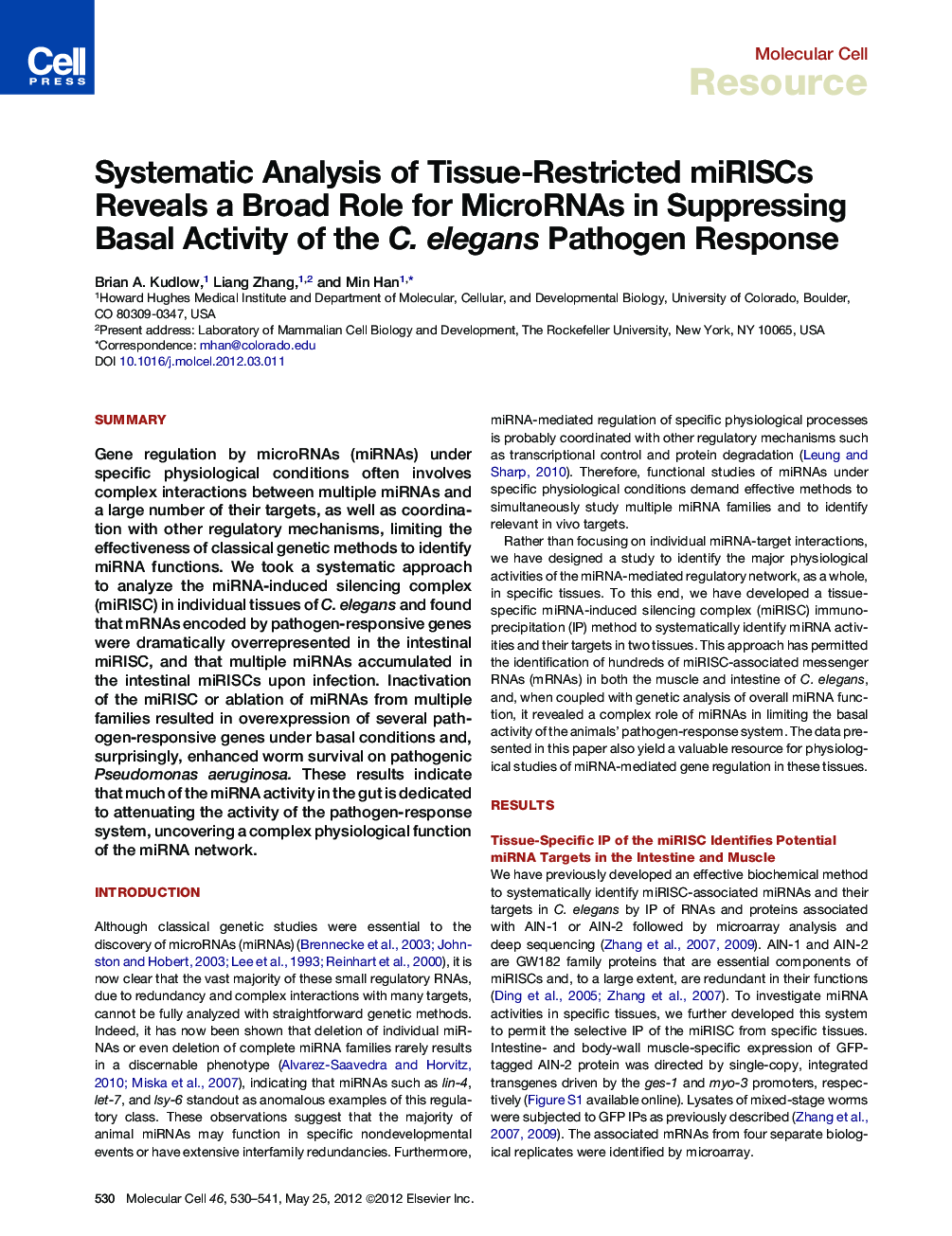| Article ID | Journal | Published Year | Pages | File Type |
|---|---|---|---|---|
| 1996590 | Molecular Cell | 2012 | 12 Pages |
SummaryGene regulation by microRNAs (miRNAs) under specific physiological conditions often involves complex interactions between multiple miRNAs and a large number of their targets, as well as coordination with other regulatory mechanisms, limiting the effectiveness of classical genetic methods to identify miRNA functions. We took a systematic approach to analyze the miRNA-induced silencing complex (miRISC) in individual tissues of C. elegans and found that mRNAs encoded by pathogen-responsive genes were dramatically overrepresented in the intestinal miRISC, and that multiple miRNAs accumulated in the intestinal miRISCs upon infection. Inactivation of the miRISC or ablation of miRNAs from multiple families resulted in overexpression of several pathogen-responsive genes under basal conditions and, surprisingly, enhanced worm survival on pathogenic Pseudomonas aeruginosa. These results indicate that much of the miRNA activity in the gut is dedicated to attenuating the activity of the pathogen-response system, uncovering a complex physiological function of the miRNA network.
► Tissue-restricted GW182 IPs identify miRNAs and their targets in specific tissues ► Pathogen-responsive mRNAs are highly over-represented among intestinal miRNA targets ► Many pathogen-response genes are regulated by miRISC components and miRNAs ► Reduced miRISC activity enhances the worm's survival on pathogenic bacteria
